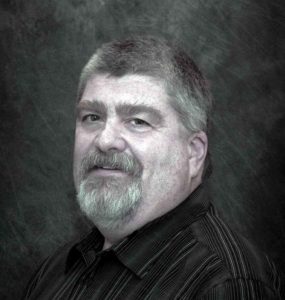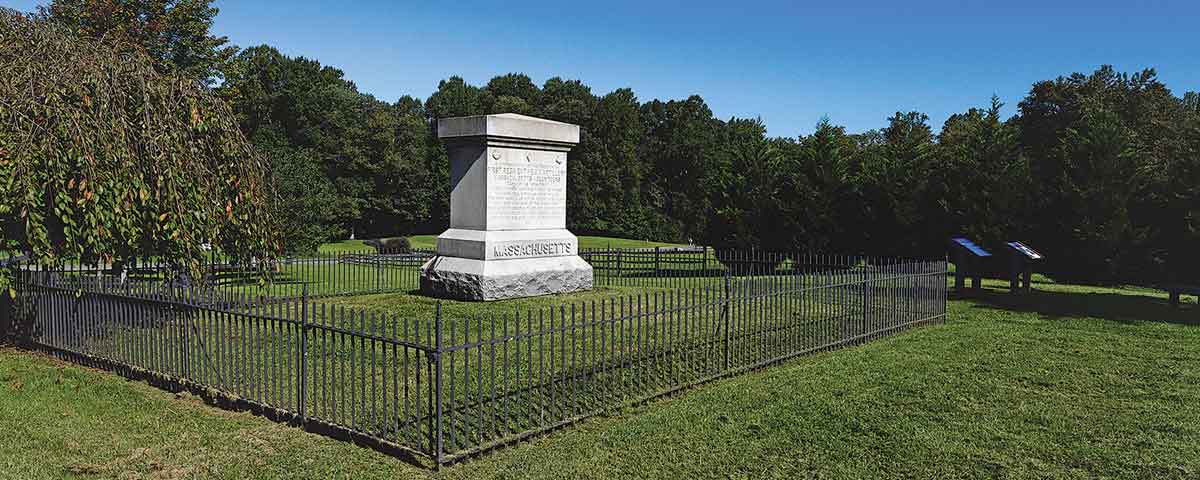Thomas Van Winkle, president of the board of directors for the Central Virginia Battlefields Trust (cvbt.org), has been working for battlefield preservation since 1996. Shortly after he moved from New Jersey that year to a home on the Wilderness Battlefield, he served for five years as president of the Friends of Wilderness Battlefield, joined CVBT in 2007, and became president of the board of directors in 2016. Over the course of his 11-year service, the organization has preserved significant acreage and tackled the challenges of maintaining their mission in the face of shifting donor bases and increases in traffic and building density.

CWT: What is the mission of Central Virginia Battlefields Trust?
TVW: We started in September 1996, almost 24 years ago. We saw that the National Park Service was having issues with purchasing land by their boundaries or that battlefield land was being sold that they legally couldn’t pay enough to buy, so we decided to try and help out. We have saved a little more than 1,300 acres. Our mission statement focuses on the core function of preserving sites on the battlefields of Fredericksburg, Spotsylvania, Wilderness, and Chancellorsville. We try not to hold onto the land forever, but to get it purchased by the NPS or get an easement from the county. We pay taxes on everything we have. We’re charged like anybody else.
CWT: Explain your “preserving dirt and grass” motto.
TVW: It means that we are a grass roots organization. Our overhead is very minimal. We’re a small group—board of directors and volunteers. The only paid staff is one executive director and a part-time assistant. We work on a shoestring and try to do what we can do. When you give to us, you’re buying the dirt and grass.
CWT: How many members does the CVBT have?
TVW: We are around 600, nationally and internationally. It’s pretty even between local and nonlocal because there were four battlefields and over 100,000 casualties. Regiments and units from many states were involved in that fighting, so we draw from a large area.
CWT: What is your primary challenge?
TVW: When I tell the story of the area’s change, it sounds like I’ve been here a hundred years. Traffic on the Route 3 corridor, which includes quite a bit of the Chancellorsville Battlefield, required a couple of traffic lights 23 years ago. Now you can’t go 10 feet without a traffic light and the building growth is unbelievable. That’s the main issue: encroachment of buildings.
CWT: How do you decide which property to protect?
TVW: We’ve always had well-known historians on board. We laid down a battle plan of the core areas that were really important to save, and we try to follow that. For instance, on Route 3 West is the area of the famous Stonewall Jackson Flank Attack at Chancellorsville. We’re literally stitching together parcels in the flank attack area as best we can. We’ve helped save about 230 acres of that. You have to sometimes change your ideas, too, because you can save a very important piece of historic ground, but others might want to build houses on land around it. Should we buy that property to protect the property we just purchased? So you have to change a little bit from the mission statement to protect what you’ve got.
CWT: Does your organization compete with the American Battlefield Trust, formerly the Civil War Trust?
TVW: No, they are one of our best partners. They are national, looking on a landscape so much larger that they may not have time or want to be able to deal with smaller parcels. We deal with parcels anywhere from a couple of 100 acres down to an acre. We work together very well.
CWT: Is donor interest strong?
TVW: We used to benefit from what we called the “Ken Burns effect” after his Civil War series came out. Back then we would get checks for $50,000, a half million dollars. Today, major and corporate donors have shied away somewhat from the Civil War because of potential public backlash. Part of the funding we rely on comes from the federal government’s American Battlefield Protection Program. Congress signed that into law in 1996. The funding from ABPP is administered through the NPS. If a grant is accepted, they give us half of whatever the cost is of our purchase, and we have to come up with the rest. Even that has become tougher; everyone is going after the same pot of money. One thing the Park Service cannot do is pay more than the assessed value of the property. Many times what an organization will do is purchase for a negotiated price and sell it back to the Park Service for what they allow and then absorb the difference.
[quote style=”boxed” float=”right”]We have saved a little more than 1,300 acres[/quote]
CWT: How do you make battlefield preservation appealing to young people and a more diverse audience?
TVW: We have an annual youth day, and local kids and students help us work on battlefields. We are trying to do outreach via Web and Facebook that is more suited for that demographic. One big change we just made regards memberships. Starting in 2019 we won’t have members; we are calling them partners. As long as you donate something in a 12-month period, you are a partner and have all the membership benefits. We’re also starting up a new small magazine; we’ve got more to tell than can fit in a newsletter.
CWT: Tell me about your most recent purchase.
TVW: Myer’s Hill on the Spotsylvania Court House battlefield. We did that because it is often forgotten. Usually, people think the battle ended on May 12—the fight in the Muleshoe. But Myer’s Hill is an area where both armies fought back and forth on May 14th. It was important high ground from which to view the viewshed of the roads and where the armies were going. At one point General Meade was reconnoitering and he was almost grabbed and captured by a Confederate. Myer’s Hill was named after the owner of the house, a Mr. Myer of Fredericksburg, who was down the road fighting at the Muleshoe when the Union set fire to his house. We have 73 acres of it, and the owner is excited to have it preserved. It is a forested area, literally untouched since the Civil War. Just a few months before that, we did the Union 5th Corps tract, 14 acres on the Spotsylvania battlefield. That will more than likely be transferred to the park. The Myer’s Hill property is outside the park boundary, so we will probably have that for some time.
CWT: Will there ever be enough acreage preserved?
TVW: I’ve always said as far as Virginia goes you could put a fence around it, and you wouldn’t go wrong preserving the whole state. But you can’t save everything, nor should you save everything. But you’ll probably never run out of things you should try to save. ✯
Interview conducted by Senior Editor Sarah Richardson





